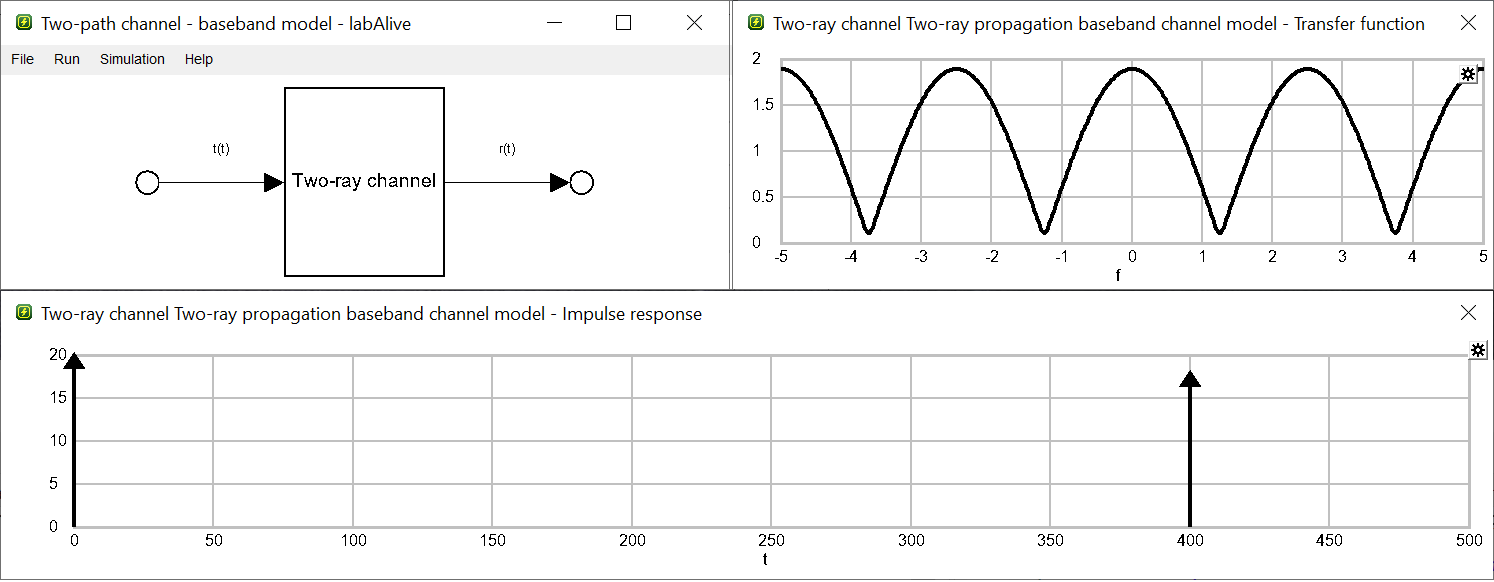 To launch labAlive simulation applications you need a Java Runtime Environment supporting Java Web Start on your system. Here you can get more information about installing the right Java version.
To launch labAlive simulation applications you need a Java Runtime Environment supporting Java Web Start on your system. Here you can get more information about installing the right Java version.
This setup implements the baseband equivalent representation of the two-path channel passband simulation. In baseband also a discrete-time channel model is used but at a moderate sampling rate, so that the channel transfer function can be derived for the bandwidth of interest. Propagation paths are modeled as channel filter taps whose delays are close to multiples of the sampling time.

The baseband equivalent model processes the transfer function around the carrier frequency of 1 GHz.
It's displayed in baseband from -5 MHz to 5 MHz
corresponding to the bandpass frequencies of 995 MHz to 1005 MHz.
The impulse response has taps at multiples of 0.25 ns.
TO DO: Update transfer functions below to demonstrate that this model is equivalent to the passband simulation.
 The direct path ray propagates along the line-of-sight. A second ray reflects off the house and propagates to point A.
|
The distance between car and house is 60m. Determine the channel impulse response and transfer function at point A!
|
 The vehicle moves 7.5 cm further to point B.
|
Determine the channel impulse response and transfer function at point B!
|
 The vehicle moves 7.5 cm further to point C.
|
Determine the channel impulse response and transfer function at point C!
|




